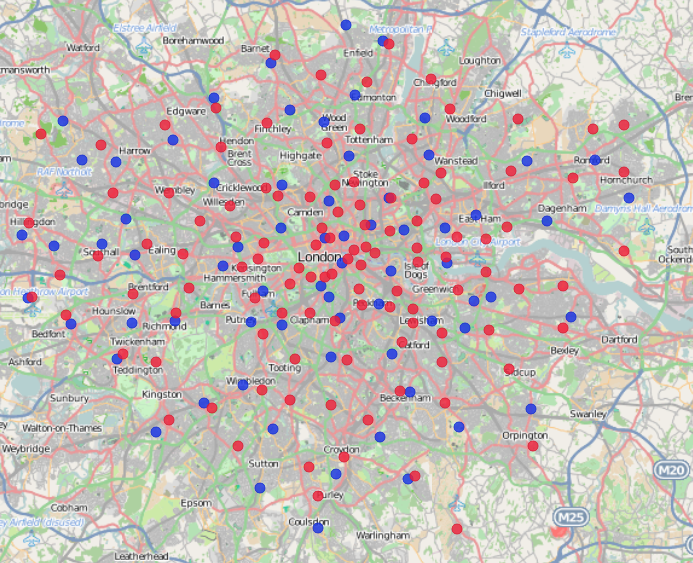After reading a number of articles regarding public services in the UK and the cost cutting happening across all government spending, it highlights an interesting issue as to whether we can cut services to reduce cost without reducing safety standards for the population. An interesting example is the London Fire Brigade which the Greater London Authority figures shows a decline in the number of incidents and call outs, this has led to policy reviews about the number of fire station required in London and up to 12 stations are being considered for closure.
On the other hand, another service which sees an increasing trend in call outs is the London Ambulance Service, even though demand is growing, the number of ambulance stations are being also being considered for closure. This raises an interesting question in the spatial allocation of stations and if it is possible to maintain targets based on timely arrival to incidents in stations are cut. If stations are located to be spatially efficient then removing any can create holes in the coverage.
By mapping the two sets of stations we can analyse ‘by eye’ the spread of the two services individually but also consider a wider policy to have the two services sharing facilities. We see considering the services individually that on the whole the network is spread out but there are locations seemingly close especially with the fire station. The ambulance stations appear much more dispersed, however when considering the two sets together under a joint share schemes, the scope for cutting station numbers appear much stronger.
Map of London Ambulance (blue) and Fire Stations (red)
Mapping here offers a unique perspective especially when making cross-comparisons in non-related services, theoretically there is potential for joint schemes which could improve efficiency. By having a single station network we can imagine up to a 70 station reduction yet maintaining geographical coverage fairly easily. Still the decision made on such policy will need to take many things in consideration which cannot be easily analysed in a spatial context such as:
- cost/rent of stations (high cost areas such as the Westminster Fire station costs approximately £7 million annually)
- employment of firefighters and paramedics (fewer needed if stations are reduced)
- political lobbying (MP criticism for stations in their constituency)
- capacity of each station
Data Sources:
London Fire Brigade
– http://www.london-fire.gov.uk/A-ZFireStations.asp
London Ambulance Service
– http://www.londonambulance.nhs.uk/about_us/where_we_are.aspx
Greater London Authority
– http://data.london.gov.uk/datastore/package/fire-and-rescue-services-incidents-attended-borough
– http://data.london.gov.uk/datastore/package/monthly-ambulance-service-incidents-borough
